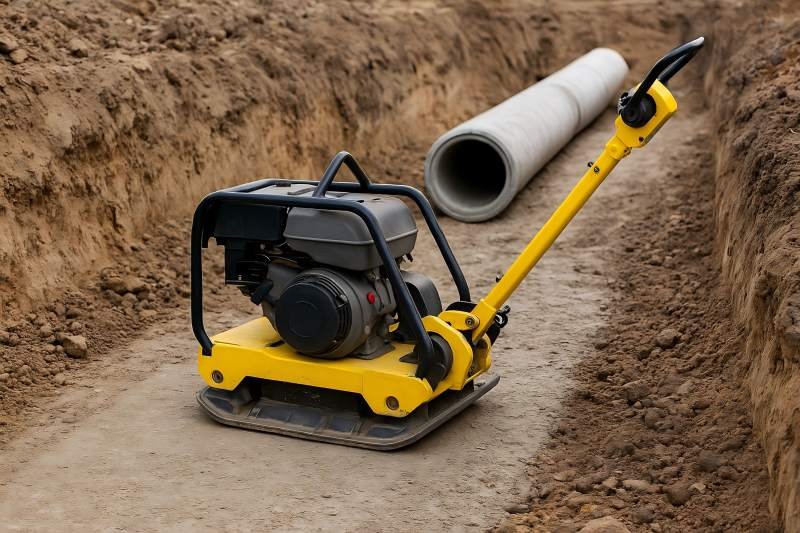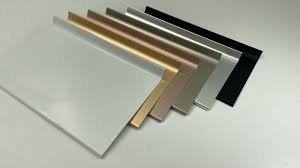Plate compactors are essential tools for achieving proper ground compaction in construction and landscaping projects. However, like any equipment, they can encounter problems that affect their performance. Understanding these common issues and how to fix them can save you time and money. Here are five common problems with plate compactors and effective solutions.
The Role of Hand Tampers
Hand tampers are simple yet effective for small-scale compaction, perfect for garden beds or post settings. They consist of a heavy plate on a handle for manual pounding. A quality hand tamper is lightweight for easy handling but delivers sufficient force. This tool is essential for DIY enthusiasts seeking precise control in compact areas.
1. Engine Won’t Start
Symptoms
One of the most frustrating issues is when your plate compactor’s engine fails to start. This problem can stem from various causes, including fuel issues, electrical malfunctions, or mechanical problems.
Solutions
- Check Fuel Levels: Ensure that there is enough fuel in the tank. If the fuel is old or contaminated, replace it with fresh fuel.
- Inspect the Spark Plug: A faulty spark plug can prevent the engine from starting. Remove the spark plug and check for wear or carbon buildup. Clean or replace it as necessary.
- Examine the Battery: If your compactor uses an electric start, check the battery connections for corrosion or looseness. Replace the battery if it’s dead or not holding a charge.
2. Insufficient Compaction
Symptoms
If your plate compactor is not achieving the desired level of compaction, it can lead to weak spots in the material. This issue may manifest as uneven surfaces or excessive settling after compaction.
Solutions
- Check the Weight of the Compactor: Ensure that you are using the appropriate size and weight of the compactor for the material you’re working with. A heavier model may be necessary for denser materials.
- Monitor Vibration Frequency: If the vibration frequency is too low, adjust the throttle to increase it. Higher frequencies are more effective for granular materials, while lower frequencies work better for cohesive soils.
- Compact in Layers: If you’re trying to compact too deep at once, switch to compacting in thinner layers. Aim for 4 to 6 inches per layer for optimal results.
3. Overheating
Symptoms
Overheating can lead to reduced performance and potential damage to the engine. Signs of overheating may include an increase in engine temperature, unusual noises, or smoke.
Solutions
- Check Air Filters: Dirty or clogged air filters can restrict airflow, causing the engine to overheat. Clean or replace the air filter regularly to ensure good airflow.
- Inspect the Cooling System: If your compactor has a cooling system, check for blockages or leaks. Ensure that coolant levels are adequate if applicable.
- Take Breaks: Avoid prolonged continuous use, especially in hot weather. Allow the compactor to cool down periodically to prevent overheating.
4. Uneven Compaction Results
Symptoms
If you notice that the surface is uneven after compaction, it can indicate improper technique or equipment issues. This could lead to problems with the final surface quality.
Solutions
- Check for Level Surface: Ensure that the ground is level before starting the compaction process. Uneven ground can lead to inconsistent results.
- Inspect the Base Plate: Look for damage or wear on the base plate. A damaged plate can lead to ineffective compaction. Replace or repair as needed.
- Adjust Operator Technique: Ensure you are using proper compaction techniques, including overlapping passes by 30-50%. This helps achieve a more uniform surface.
5. Excessive Vibration or Noise
Symptoms
While some vibration is normal during operation, excessive vibration or noise can indicate a problem. This can lead to operator fatigue and may affect the compactor’s performance.
Solutions
- Inspect the Vibration Mechanism: Check for loose or damaged components in the vibration mechanism. Tighten or replace any loose bolts or parts to ensure proper functioning.
- Use Anti-Vibration Gloves: If excessive vibration is affecting operator comfort, consider using anti-vibration gloves. This will help reduce the impact on the hands and arms.
- Evaluate Ground Conditions: Hard or rocky ground can increase vibration levels. If you’re working in such conditions, consider using a heavier compactor or adjusting your technique to minimize vibration.
Conclusion
Understanding and addressing common problems with plate compactors can enhance performance and prolong the life of your equipment. By keeping an eye out for issues like starting problems, insufficient compaction, overheating, uneven results, and excessive vibration, you can take proactive steps to ensure your compactor operates effectively. Regular maintenance and adherence to proper operating techniques will help you achieve the best results in your construction and landscaping projects. With these solutions in hand, you’ll be better equipped to tackle any challenges that arise with your plate compactor.





